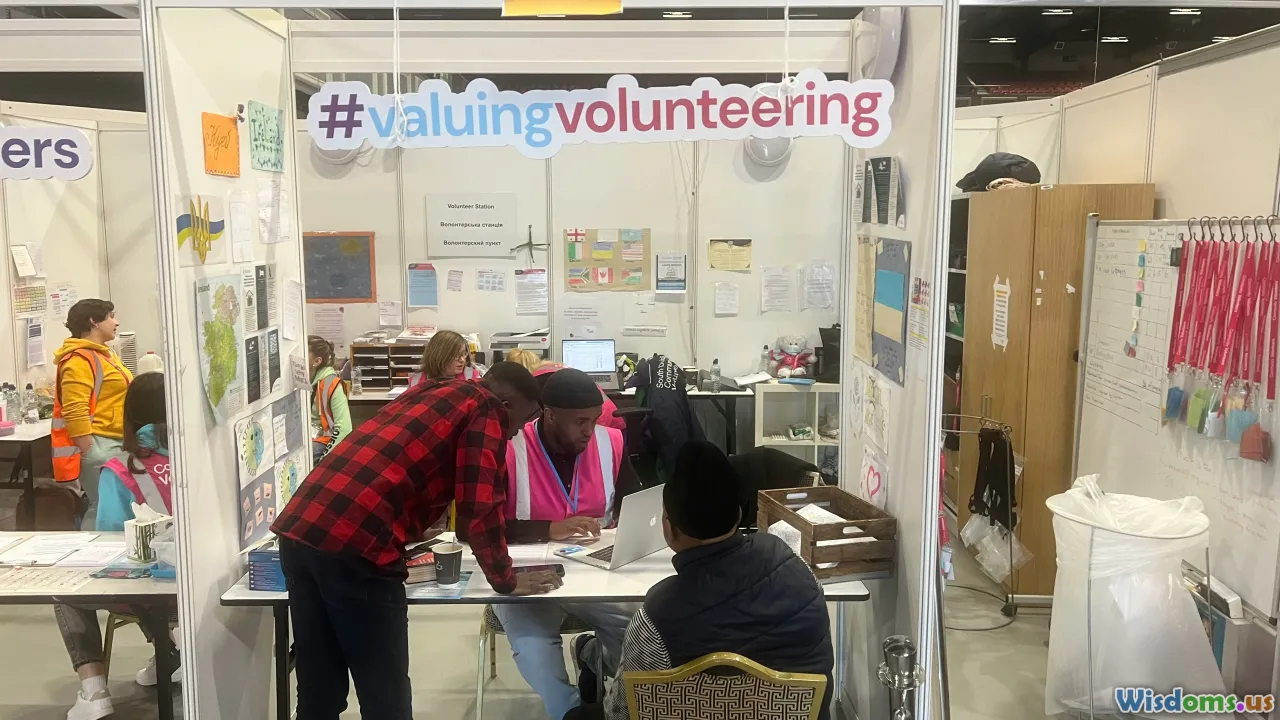
How to Successfully Pivot Careers Without Starting Over
15 min read Learn effective strategies to pivot careers without starting from scratch, leveraging existing skills and connections for a smoother professional transition. (0 Reviews)
How to Successfully Pivot Careers Without Starting Over
Changing your career path can feel both exhilarating and daunting. For many professionals, the idea of throwing away years of hard-earned experience is unthinkable—especially when bills, family needs, or reputation are at stake. What if you could achieve a fulfilling career pivot without burning all previous bridges? The truth is, leveraging your existing knowledge can not only streamline your transition, but also position you as a more valuable asset in your new field. Let's explore actionable strategies to successfully pivot careers without hitting reset.
Identifying Your Transferable Skills

The foundation of a successful career pivot lies in recognizing which skills you already have—and how they might apply to your target role or industry. Transferable skills are abilities cultivated through previous roles that remain relevant across various job functions. Common examples include leadership, project management, problem-solving, strategic thinking, communication, and technical proficiency.
How to Assess Your Transferable Skills:
-
Inventory Your Skillset: Review your previous jobs and list out the skills you routinely used. For example, did you manage budgets, or lead a small project team? Were you the go-to person for troubleshooting new software?
-
Compare With Career Descriptions: Research your desired field and note recurring qualifications. Perhaps as a journalist you honed interviewing skills; those are invaluable for careers like market research or corporate communications.
Example: Jane, a school teacher, wanted a career in corporate training. She highlighted her classroom management, curriculum design, and presentation experience—each relevant and appealing to employers seeking workplace learning facilitators.
Strategic Networking for Opportunity Discovery

Contrary to popular belief, the majority of jobs (about 70–80%, according to various studies) are never formally advertised. Building and leveraging your network is therefore vital. But effective networking is not just about swapping business cards at conferences—it's about creating genuine connections.
Actionable Networking Tips:
- Start With Weak Ties: Often, your next opportunity emerges from acquaintances rather than close friends. Reach out to alumni, colleagues from past jobs, or professional community groups related to your target field.
- Offer Value: Lead with questions and be curious about others' experiences, before asking for help. Share helpful resources, or insights from your background.
- Tap Into LinkedIn: Beyond optimizing your profile (more on that later), participate in discussions, comment on posts from thought leaders, and join industry groups.
Example: Mark was a marketing manager in the hospitality industry during the pandemic and sought a tech marketing role. By reactivating connections from a digital marketing certification course, he landed an informational interview that led directly to a job offer.
Rebranding Yourself Through Storytelling

Transitioning into a new field isn't necessarily about erasing your old experience—it's about reframing your narrative. Employers care more about how you'll solve their problems than about linear experience. A well-crafted story puts your background into context and explains the logic behind your pivot.
Crafting Your Career Story:
-
Define Your Career Why: Why do you want this change? Make sure this comes across as forward-looking and values-driven, not just an escape from your current field.
-
Highlight ‘Bridge Moments’: Point to specific achievements or turning points where your existing skills overlapped with your target industry. Maybe you led a project that exposed you to new technologies or industries.
-
Practice Your 60-Second Pitch: Prepare a brief, compelling explanation for networking events or interviews—make it accessible and relevant.
Example: Priya, a former HR specialist pivoting to user experience (UX) research, tells the story of analyzing employee feedback to inform company HR software—a clear, relatable link between past and future roles.
Filling Gaps With Targeted Learning

No matter your background, career changes often require new knowledge. But instead of embarking on a four-year degree, consider targeted learning: online certifications, bootcamps, or micro-credentials. This focused approach provides practical skills and quick wins.
How To Upskill Efficiently:
-
Identify Key Competencies: Examine job postings for required software, technical knowledge, or methodologies. Choose reputable courses—such as Coursera, LinkedIn Learning, or industry-specific platforms.
-
Leverage Your Company’s Offerings: If you’re still employed, many organizations offer tuition reimbursement or access to training at little cost.
-
Showcase Your Efforts: Add completed courses and certifications to your resume and put your new skills into practice with volunteer or freelance projects.
Example: Alex, a sales executive, wanted to move into data analytics. He completed a 12-week online bootcamp, followed up by analyzing sales data trends for a nonprofit, building a mini-portfolio to display his abilities.
Boosting Visibility With a Modernized Online Presence

A well-curated online presence not only illustrates your capabilities, but also assures employers that you're serious about your pivot. Yet, the wrong digital footprint can leave you pigeonholed into your previous identity.
Actions for Quick Online Wins:
-
Update All Profiles: Revise your LinkedIn, personal website, and online portfolios. Clearly state your target role in the headline or summary.
-
Highlight Evidence of Your Pivot: Share articles, project outcomes, or certifications relevant to your new direction. Pin related posts or testimonials to the top of your pages.
-
Solicit Recommendations: Ask past colleagues to endorse skills that are relevant for your new path—such as teamwork, adaptability, or technical prowess.
Example: Lola, originally a graphic designer transitioning into product management, shared design sprints she helped lead, blogged about user testing, and openly detailed her journey from design to management.
Testing the Waters With ‘No-Risk’ Experiments

A risky career leap can be daunting—but you don’t have to quit your day job to make progress. Engaging in limited-scale, ‘no-risk’ experiments in your target field allows you to build practical experience, test your interest, and gather evidence for your resume.
Low-Commitment Experiments:
- Freelance Projects: Websites like Upwork or Fiverr, or industry-specific networks, offer opportunities for project-based work.
- Volunteering: Nonprofits and organizations often seek extra help. Volunteer for initiatives that mirror your desired job skills.
- Temporary Assignments: Contract work can provide a foot in the door and facilitate further networking.
- Shadowing and Job Simulations: Reach out to professionals for a day-in-the-life experience or complete online job simulations—a growing trend on platforms like Forage.
Example: Yuki volunteered to manage a fundraising campaign (project management, communications) before applying to nonprofit program management positions. This hands-on experience boosted her confidence and credibility.
Leveraging Industry Jargon and Adopting a Learning Mindset

Each industry or profession comes with its own language, etiquette, and set of expectations. Mastering this professional vocabulary signals to employers that you’re ‘in the know’—not an outsider peeking in.
How to Get Fluent in Your New Field:
- Read, Listen, Observe: Subscribe to newsletters, follow blogs, listen to podcasts, and join webinars in your chosen area.
- Engage With Thought Leaders: Comment on articles, ask questions, and become a familiar ‘face’ in digital circles.
- Adopt a ‘Beginner’s Mind’: Be open with your learning journey—most professionals respect curiosity over stubbornness.
Example: After a decade in finance, Samuel switched to sustainable energy. By using terms like ‘power purchase agreements,’ ‘renewables integration,’ and ‘grid parity’ in his conversations and LinkedIn posts, he quickly demonstrated that he belonged.
Making the Most of Internal Mobility and Secondments

Not every pivot requires leaving your current employer. Many organizations encourage growth across departments. Internal mobility—changing roles within a company—often requires less risk and offers on-the-job training.
Tips for Navigating Internal Career Changes:
- Express Your Intentions Early: Approach your manager or HR representative with your aspirations, emphasizing your interest in contributing to broader company goals.
- Take Cross-Functional Assignments: Volunteer for committees, task forces, or temporary projects with other teams.
- Leverage Employee Resource Groups (ERGs): They can offer exposure to new skill areas and connect you with mentors.
Example: Amanda, a customer service supervisor, joined her company’s business intelligence working group. Her insights from frontline customers made her uniquely qualified to move into analytics.
Mastering the Interview: Convincing Employers You’re the Right Fit

Even with the right skills and story, interviews can be a challenge when you’re not from a ‘traditional’ background. Your goal is to remove any doubt that you can handle the new role and thrive.
Strategies for Interview Success:
- Anticipate Doubts: Preemptively answer the most obvious question: Why move now? Why you?
- Focus on Achievements, Not Past Titles: Use the STAR (Situation, Task, Action, Result) method to structure your stories with results at the center.
- Draw Tangible Parallels: For example, managing conflicting personalities in teaching translates directly to cross-functional team management in corporate environments.
- Ask Insightful Questions: Show you’ve researched the industry by inquiring about challenges you'd like to help solve.
Example: Ethan, transitioning from journalism to content marketing, highlighted a national award (Result) for a campaign built on thorough research (Action), demonstrating the transferable value.
Maintaining Resilience Through the Ups and Downs

Career changes rarely follow a straight line. You’ll likely face setbacks, rejections, or moments of self-doubt. What separates those who make it from those who don’t is resilience—a learned, adaptable skill.
Tactics for Building Resilience:
- Celebrate Small Wins: Document milestones like a new connection, a skill mastered, or an encouraging informational interview.
- Maintain Work–Life Integration: Balancing upskilling or side projects with rest and personal life avoids burnout.
- Seek Support Communities: Join forums (like career pivot groups, or subreddits such as r/careerguidance) to share experiences and find encouragement.
Example: Nicole kept a "pivot journal" documenting what worked and lessons learned. Sharing her journey in a bi-weekly career support group helped her stay energized and manage the emotional ups and downs.
Changing careers doesn't have to feel like starting from ground zero. By emphasizing your strengths, intentionally filling any gaps, and rebranding yourself with clarity and authenticity, you can chart a new trajectory that accelerates—not erases—your progress. Remember, your past experience in one field isn’t baggage; it’s the toolkit that will set you apart in your next big adventure.
Rate the Post
User Reviews
Other posts in Career Transition & Change Management
Popular Posts














